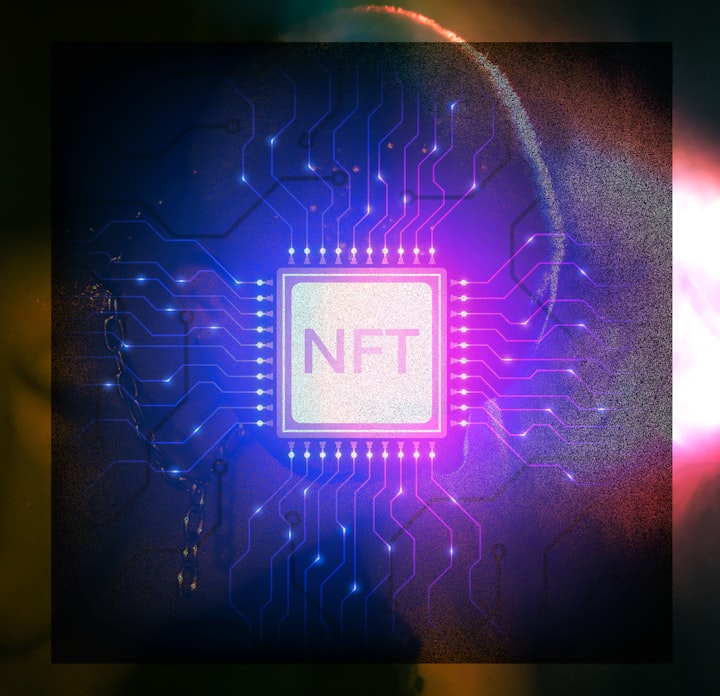What are NFTs:
speculative bubble or next digital revolution?

What are NFTs, why is there so much discussion on the subject, why they have acquired so much value and what legal issues they hide.
You have probably already heard of NFT, considering that in recent months these non-fungible tokens have been the subject of increasing attention, influencing and capturing the interest not only of the art market, but also of many other industries.
Since the sale of “Everydays: the First 5000 days” - a digital collage of 5,000 pieces by Beeple - for 69.3 million dollars, the NFT phenomenon has literally exploded. A few months after that event, there are those who are wondering about the long-term reliability of the phenomenon, given that the market has recently taken a downward turn, but there are also those who believe with conviction that NFTs will take the upper hand over the information society.
But what are NFTs? What is it about exactly? And especially. is it just another bubble or are NFTs the next big revolution? And what are the legal issues related to the use of NFTs and how should they be resolved?
NFT stands for Non-Fungible Token. As such they cannot be exchanged for another item because they are unique. For example, one piece of art is not the same as another. They both have unique properties. NFTs are tokens that live on a blockchain and represent the ownership of unique objects, therefore they are certificates of ownership relating to digital objects.
NFTs are units of validated information, linked to a blockchain, which make it possible to transform digital copies of analog or digital works into unique and verifiable assets that are easy to exchange on the blockchain. Unlike a bitcoin, which is fungible just like paper currency (in other words, a bitcoin can be exchanged for another bitcoin and you will have exactly the same thing), NFTs are not interchangeable. On the contrary, these tokens are inextricably associated with a single, unique and specific object, in a way that allows that object to be tracked on the blockchain to provide the buyer with proof of ownership of a single asset.
Why are NFTs useful? Well, tracking who owns a digital file is difficult because it can be copied and distributed effortlessly. So how can you prove who is the original owner when everyone has an identical copy of the file? NFTs solve this problem.
Imagine that you have created a digital artwork, essentially a JPG, on your computer. One can create or mint an NFT from this. The NFT that represents your artwork contains some information about it, such as a unique fingerprint of the file (the so-called fingerprint ), a token name and a symbol. This token is then stored on a blockchain, and you, the artist, become the owner of it.
Now you can sell that token by creating a transaction on the blockchain. The blockchain ensures that this information can never be tampered with. It also allows you to track who is the current owner of a token and how much it has been sold for in the past.
It is important to note that the work itself is not stored within the NFT or blockchain. Only its attributes such as the fingerprint or hash of the file, the token name and symbol, and optionally a link to a file hosted on IPFS.
When you buy an NFT that represents a work of art, you don't get a physical copy. Most of the time, anyone can download a free copy of a digital file. The NFT represents only the certificate of ownership, which is registered in a blockchain so that no one can tamper with it.

And to make it even stranger: While the token owner owns the original digital artwork, the creator of the NFT retains the copyrights and reproduction rights. So an artist can sell his original artwork as an NFT, but he can still sell prints, but we will discuss this in the next articles in this series on NFT legal issues.
In essence, any digital object - including an image, a video, a song, even part of a code - can be purchased as an NFT, with complex and not entirely predictable consequences for the industries involved in this change. For example, digital goods such as GIFs and videos can be copied and pasted. Even though blockchain technology prevents tokens from being altered or tampered with, the underlying digital assets can still be spread across the internet.
In addition to digital art, NFTs can also be used to sell any object and even physical assets for example by splitting the ownership titles of an asset. You can read the article available here about the TOKO project launched by DLA Piper, a fast, safe and convenient solution to buy and sell high value goods using blockchain technology.
How are NFTs generated? Minting (ie the "minting" of tokens), is defined as the computer process of validating and registering certain information in a blockchain, through the creation of new "blocks". Imagine the blockchain as a kind of digital book: digital pages can only store a limited amount of data, just like paper pages. Therefore, new pages are created regularly to store more information, thereby generating "new blocks" in the blockchain.
Why are some NFTs worth millions? Well, their value is determined by how much people are willing to pay.
If I'm willing to pay one hundred euros for a particular token, then it's worth one hundred euros. Prices are demand-driven, so be careful as an expensive NFT becomes worthless if no one wants to buy it.
About the Creator
Owais Abbas
I will write anything that I like ❤️





Comments
There are no comments for this story
Be the first to respond and start the conversation.